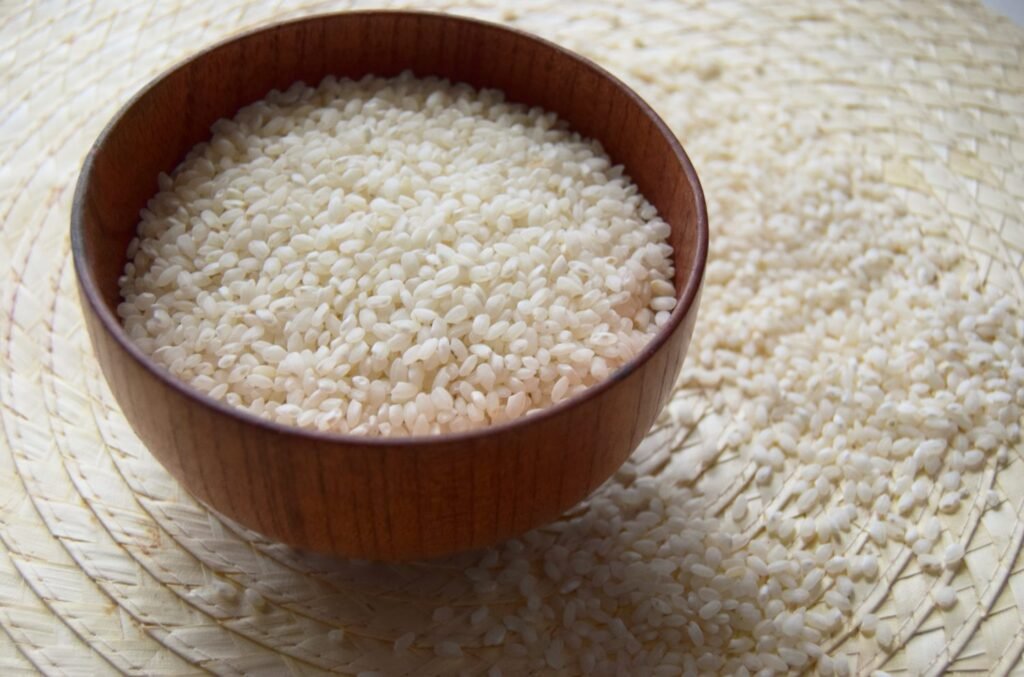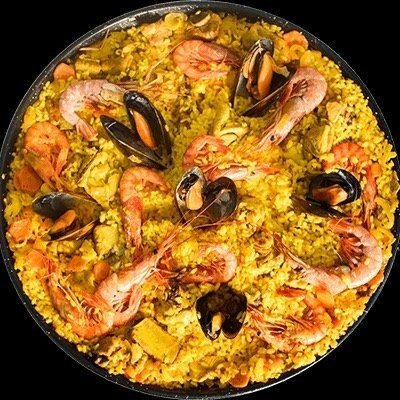Rice, without a doubt the most international and universal food of all.
A part of every culture and gastronomy in the world, and a basic ingredient of many peoples diet.
Yet since there are many types of rice, is it important to have a determined type when it comes to Paella?
Let’s look in depth at what kind of rice we can find throughout the world and in history, how rice developed in Valencia, and why the classical Valencian rices are the best for Paella, particularly the famous Bomba Rice.
Here you will find the the ultimate and most complete guide to understand which is the best rice for a great Paella.
Index
The Importance of the Grain
As we know, there are thousands of different varieties on the market.
But what makes a long grain, once cooked, firmer and looser than a round grain of rice? Why do glutinous rices acquire that uniform pasta image that allows us to shape them to our liking?
The answer is in the starch of the grain.
Unlike the common knowledge that circulates around, it is not about the amount of starch that each variety contains.
For example, Basmati grain has the same percentage of starch as that of Bomba rice, yet their uses for Paella are totally different.
It is not therefore the amount of starch that matters, but the nature of the starch that helps us predict the behavior of each variety of rice in the kitchen.
There are two ways starch can be present in the grain: either in the form of amylopectin or in the form of amylose.
The percentage of amylose or amylopectin that the grain has will depend on the organoleptic qualities (in essence the way it creates a sensorial perception) of the rice once cooked.
Luckily for us, nowadays the relationship between the amylose content and the functional properties of each variety has been technically and scientifically demonstrated.
Thus, there is a positive and proven linear correlation between the consistency and retrogradation (return of moisture that produces stickiness) and a negative correlation between the adherence and viscosity.
Basically, the response of a rice in the kitchen is directly linked to the amylose and amylopectin content of the grain.
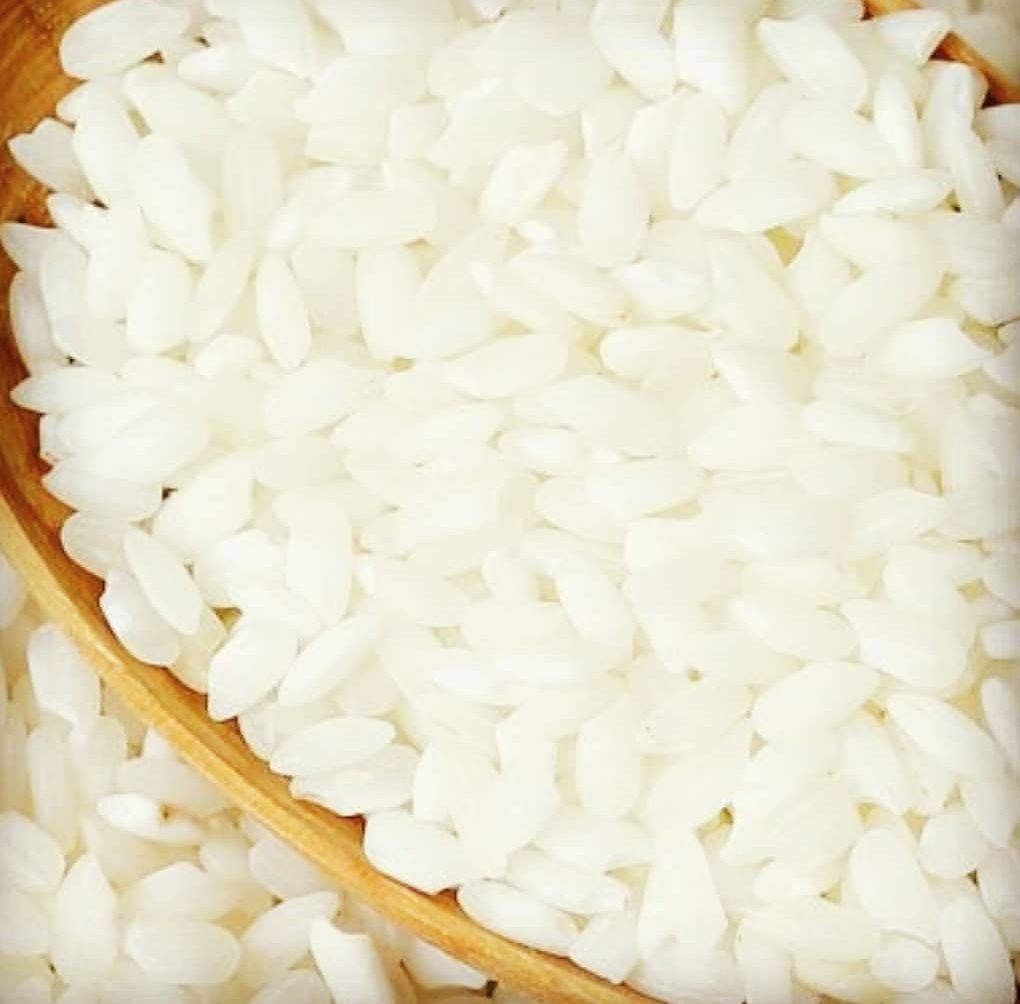
Amylose causes the grain to decrease its wettability and the tendency for the grains to remain loose after cooking.
It gives hardness to the grain, leaving a more consistent rice, and low humidity while chewing.
The creaminess of the grain is slowed by the amylose, as well as its stickiness and its contrary to its dis-integrability.
In essence, we can affirm that varieties rich in amylose (percentages between 25% and 30%) tend to give dry cooked grains, rather hard and even harder when cooled.
Therefore these are dry grains, referring both to their wettability and their humidity.
As a result, when we introduce them into our mouth and before chewing them, we will find that their surface is little or not at all humid (we are talking here about wettability), and when we chew them we will find that they offer us a rather dry food feeling (we are referring to humidity).
This low humidity and wettability clearly translates into low flavor absorption capacity.
However, we will have firm and loose grains, which have expelled few soluble solids to the water and therefore will give clear broths when cooked in excess of water.
On the contrary, varieties low in amylose and rich in amylopectin will give us grains with a certain degree of wettability and humidity.
These are grains with a greater capacity to absorb flavor, much less hard, with a greater tendency to adhere to each other.
Once compressed with the molars, the low amylose rice varieties will give us a creamy paste, which will allow the flavors to express until the last moments of swallowing.
Grains excessively low in amylose will give us varieties with a very high stickiness, to the point of obtaining a paste that is difficult to chew.
Today there are thousands of varieties on the market with very diverse grain compositions ranging from amylose percentages of less than 7% to more than 30%.
| Higher % of Amylose | Higher % Amylopectin |
| Loose grains after cooking | High levels of wettability and humidity |
| More consistent rice | Greater flavor absorption capacity |
| Dry and hard grains | High stickiness |
| Less taste absorption capacity | Expulsion of soluble solids |
| Poor expulsion of water soluble | Ideal for traditional Mediterranean recipes |
| Ideal for salads | Risk of going over, delicate in cooking |
| Resistant to cooking |
Types of Grains
Now that we have learned what makes the difference between the various types of rice, let’s get a little bit more technical and see the many classifications we can find about rice.
Classified by size:
| Type | Length | Width Ratio |
| Long Grain | > 6mm | 2 to 3 mm |
| Round or Short Grain | Min 5.2 mm | < 2 mm |
| Medium or Semi-long Grain | Between 5.2 and 6 mm | < 3 mm |
Classified by the concentration of Starch:
Depending on the concentration of Starch, we will find two different types in the centre of the grain, which you will be able to appreciate while cooking the rice:
Pearlized or crystalline.
The pearl is the concentration of starch in the center of a grain. The pearling allows the absorption of flavors during cooking. For example, most of the japonica are pearly. However, not all the grains of pearl rice have indeed pearl.
This leads us to two types of classifications of rice, Indica or Japonica:
– Indica: long and crystalline rice, less creamy firm grain, is loose when cooked, but does not absorb flavor. Examples of this type of rice are Basmati or Tahibonet.
– Japónica: Round or medium and pearly grains, of less firm consistency and greater adherence between grains. They absorb flavors very well, but they pass easily. Their gelatinization fringe makes them extremely fragile to excessive rest.
As you have probably guessed, this categorization corresponds to the culinary differences in rice preparations between two types of cuisine, Asian and Mediterranean respectively.
Classified by the Industrial processing:
– Rice in shell: Mowed and threshed. It is not sold to the final consumer.
– Whole grain rice: Without shell but with pericarp (Brown leather).
– White rice: White grain, which is the most commonly used.
– Steamed, parboiled or parboiled rice: Subjected to a process of pressure and temperature in an integral way. Once bleached, according to the usual process, it is not passed when cooking even if there is overcooking.
– Quick cooking rice: Precooked, we find it with different presentations and final cooking methods. It usually comes alone, with spices or mixed with other ingredients.
And finally, a classification of the different grains by their percentage of amylose:
TABLE OF PERCENTAGES OF AMYLOSE IN RICE
| VARIETY | TYPE | % AMYLOSE |
| GLUTINOSE | JAP | 0 |
| VENERE | JAP | 16.57 |
| ARBORIUM | JAP | 17.3 |
| SENIA | JAP | 18.2 |
| BAHIA | JAP | 18.6 |
| BALILLA X SOLLANA | JAP | 19.3 |
| TEBRE | JAP | 20 |
| LIDO | JAP | 21 |
| CARNAROLI | JAP | 22.2 |
| VIALONE NANO | JAP | 22.8 |
| BOMBA | JAP | 23.1 |
| PUNTAL | IND | 23.4 |
| JAZMIN | IND | 24 |
| BASMATI | IND | 26 |
| TAHIBONET | IND | 28.3 |
In summary, and depending on the rice we want to cook, to obtain maximum gastronomic satisfaction we must remember four fundamental aspects:
- Choose the right rice for each dish.
- Serve the rice at its doneness.
- Give it the ideal flavor point.
- Getting the oil point
Now that we have learned what’s important and what we must look for in a grain of rice when cooking Paella, let’s get a bit deeper into how rice developed in Valencia and what are the most important types.
The History of Valencian Rice
As you can read on our previous post, Valencia enjoys the privilege of being recognized as the area of Spain where rice began to be grown.
This happened in the 8th century AD. with the arrival of the Arabs to our Peninsula. It is proven that the first rice plant in Valencia was developed on the shores of the Albufera lake, specifically in lands that today correspond to the municipality of Sueca.
In the definitive formation of the rice fields that exist today, the hand of man played a very important role, specially due to the intensive Paella-oriented labor of the land from the end of the 19th century to early 20th century.
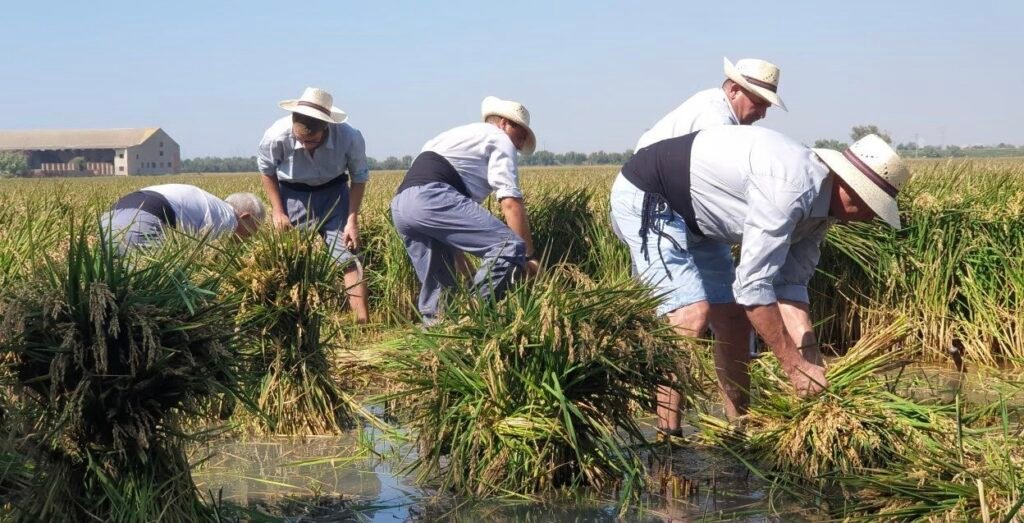
This practice in question consisted in the extraction, with extraordinary effort and without the use of machines, of land from the center of the lake and transfer it to the shores, creating the swampy land that rice needs for its development.
In this way, the surface of the lake was reduced while the extension of the rice field increased. Eventually rice turned out to be a very profitable crop and thanks to it, it was developed for centuries by an entire society.
The Importance of the Origin
That is why it is very important to recognize the Denomination of Origin “Arroz de Valencia” (Valencian rice), which covers the rice lands that are located in the Albufera de Valencia Natural Park and the Marjal de Pego Oliva.
Of the more than 100,000 varieties that exist today, the D.O. Rice from Valencia protects, among others, the varieties of rice type japonica, Senia, Bahia, Albufera and Bomba, as they are traditional in the growing area and are the ones that best adapt to Mediterranean cuisine.
In general, and as we have seen, the japonica varieties, with lower amylose content, are the ones that best conduct the flavors, the ones that best integrate into the cooking broths and present a texture more in line with Mediterranean tastes, and Paella in particular. The indica-type rices, with longer and firmer grain, have worse flavors due to their higher amylose content.
It is important to highlight that “D.O. Arroz de Valencia” carries out strict controls that allows to certify, package by package, the origin of the product, its quality, varietal purity and traceability, to guarantee the consumer a product with the flavor of tradition and total guarantee of quality.
Main Varieties of Consumption and Cultivation in Spain
Let’s look now in depth at what the most used grains when it comes to Paella, but also a greater look into the vast variety of rice that we may find in Spain:
– Bomba: The most famous of the Valencia rices for Paella. It is more characteristic because its yield is lower than other varieties. This low yield is due to the greater height of the plant, which makes it easier for it to lie down and, it’s also more sensitive to the attack of fungi that greatly reduce production and has a higher proportion of husk. Its most notable advantage in the kitchen is that it does not open, and when this happens, it does so transversely, not longitudinally. By keeping the grain hard and loose, even subjecting it to overcooking, the rice does not pass even if we let it rest. This is because, despite being a japonica variety, it contains a large amount of amylose, so its behavior is close to that of indica. It takes between 17 and 20 minutes to cook.
– Sénia: One of the most characteristic of Valencian cuisine and its rice fields. It has a high amylopectin content so it absorbs the flavor better than any other, and its texture is very creamy. Its main drawback is its low resistance to overcooking, which causes it to open at its ends. It is a rice that is usually marketed as round rice and cooks for 13 to 15 minutes.
– Bahía: It is cultivated very little, and similar to what happens with Sénia veriety, the Regulatory Council allows its mixture.
– Balilla x Sollana: It is a hybrid with morphological characteristics similar to Bomba rice, but cheaper. Together with Bomba, it is one of the two varieties grown under the D.O. Calasparra, which with Valencian, are the two D.O. of rice existing in Spain. It has a little longer cooking time than Senia.
– Albufera: It is a new variety of rice that bears the name of the park, that is, the Albufera Rice and that has been obtained through a procedure of crossing crops between the Bomba and Senia varieties. Cooks in 16 minutes
Why Valencian Rice is the Best for Paella
At this point, and after all this information, it’s normal for a question to come to mind:
What is then the best variety for the Paella? Or put another way, what is the correct balance between amylose and amylopectin?
If so, then the answer must be inexorably linked to yet another question: How will I use the rice in my kitchen?
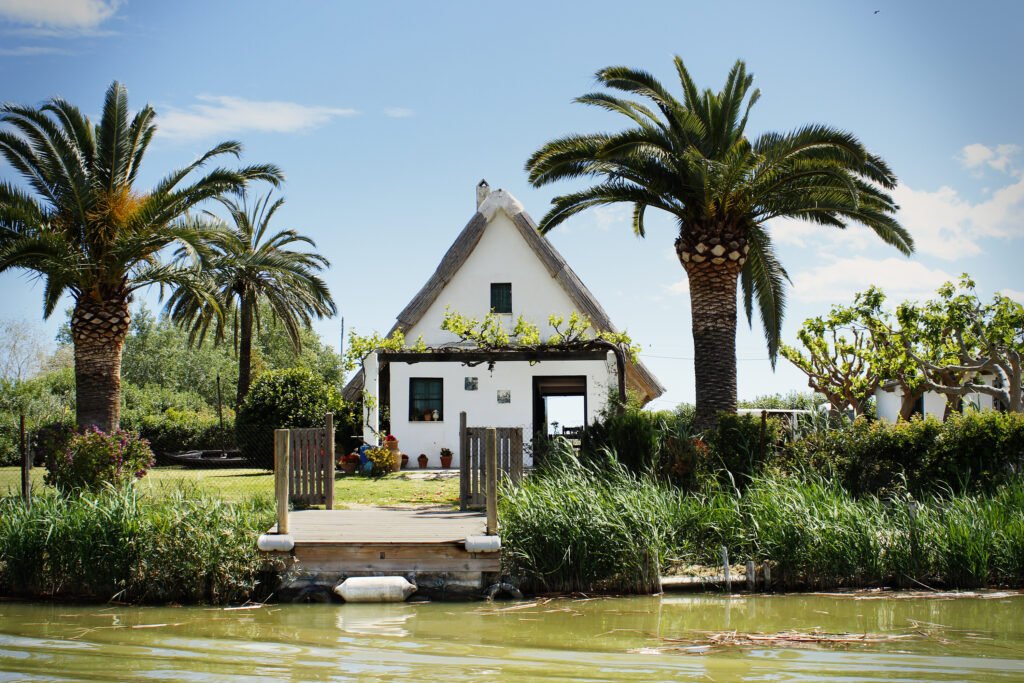
In most of the world, the culinary use of rice is reduced to being the garnish, or accompaniment to other preparations.
When the use of rice is reduced to cooking it in boiling water and then consumed alone or mixed with other ingredients, as in the case of three delights rice, sushi or Indian curries, it is better to use rice from the Indica sub-variety.
But in Valencian cuisine, just like in Italian risottos, rice absorbs and transmits the flavors of the broth in which it is cooked and of the ingredients together with those it cooks.
Therefore, looking at rice from a Mediterranean perspective, that is, as we understand rice cooking in Spain, the best varieties are undoubtedly the japonica type, with an intermediate content of amylose.
That is because Mediterranean gastronomy does not understand rice as an ingredient in its recipes but as a conductor of flavor.
The difficult task of rice in this kitchen is to absorb the flavors and aromas that the rest of the ingredients gave to the cooking broth and elegantly guide them to the palate.
After rigorous organoleptic studies, the Denomination of Origin “Arroz de Valencia” has determined that the best varieties for Mediterranean cuisine are Senia, Bahía, Albufera and most of all, Bomba.
Bomba Rice, simply the Best Type for Paella
The Valencia Rice, in its three varieties, Bahía, Senia and Bomba, is characterized by being a short grain rice and very pearly.
As we have seen, the pearl of rice is nothing more than a concentration of starch that some grains of rice have of the varieties that allow for best absorption of the flavors of the ingredients.
Therefore, rice from Valencia is an excellent conductor of flavor, thus becoming the ideal rice for cooking Paellas.
But even though there are four types recommended, in reality, the two most used rices when it comes to Paella are the Senia Variety and the Bomba variety.
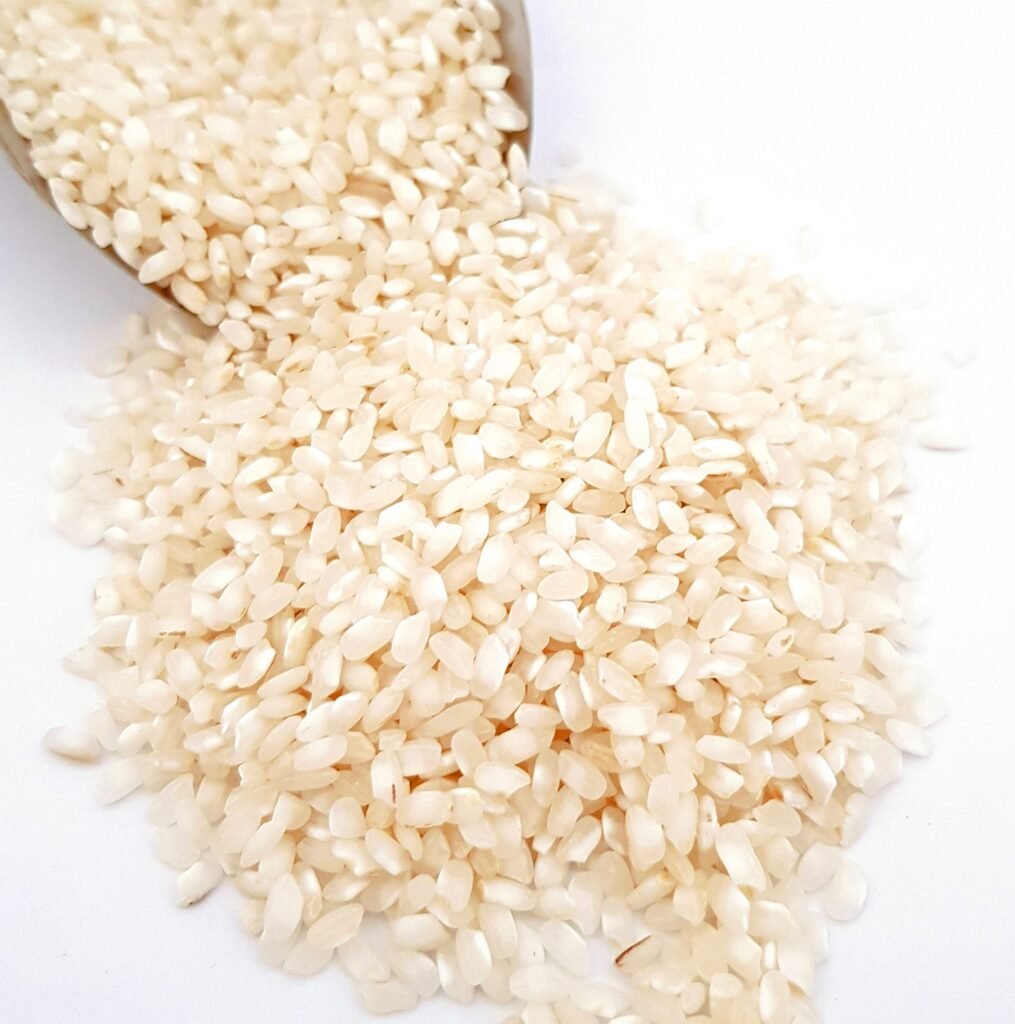
Senia variety rice is creamy, moist inside and on its surface, which favors the conduction of flavors.
But the same surface moisture that provides added flavor prevents the beans from loosening up. Hence, it does not support overcooking and is easily knitted.
However, the Bomba rice variety is more appreciated than the Senia variety. The advantage of Bomba rice is that it retains very similar organoleptic characteristics to Senia but is more resistant to overcooking.
Bomba rice allows us to exceed the optimal cooking time for a few minutes without the rice overcooking or “filling”. As it is richer in amylose than Senia, it holds overcooking and stands better without overcooking it, although its texture is less creamy and transmits flavors a little worse than Senia.
It is especially appreciated by restaurants since they have to cook many rice dishes at the same time and as well by those who want to make sure that the rice will come out more easily at its point.
Why Bomba Rice
As we have seen, the Bomba variety has an added value that has made it one of the most appreciated rice dishes both by great restaurateurs and by housewives.
This rice keeps the grain loose and hard even by overcooking it, meaning that the rice won’t pass or dough even if we let it rest too long.
In this way, the task of cooking and serving the rice is easier. And that is the reason our Paellita’s come only with the best Bomba rice!
Sign up to keep updated with everything related to Paellita
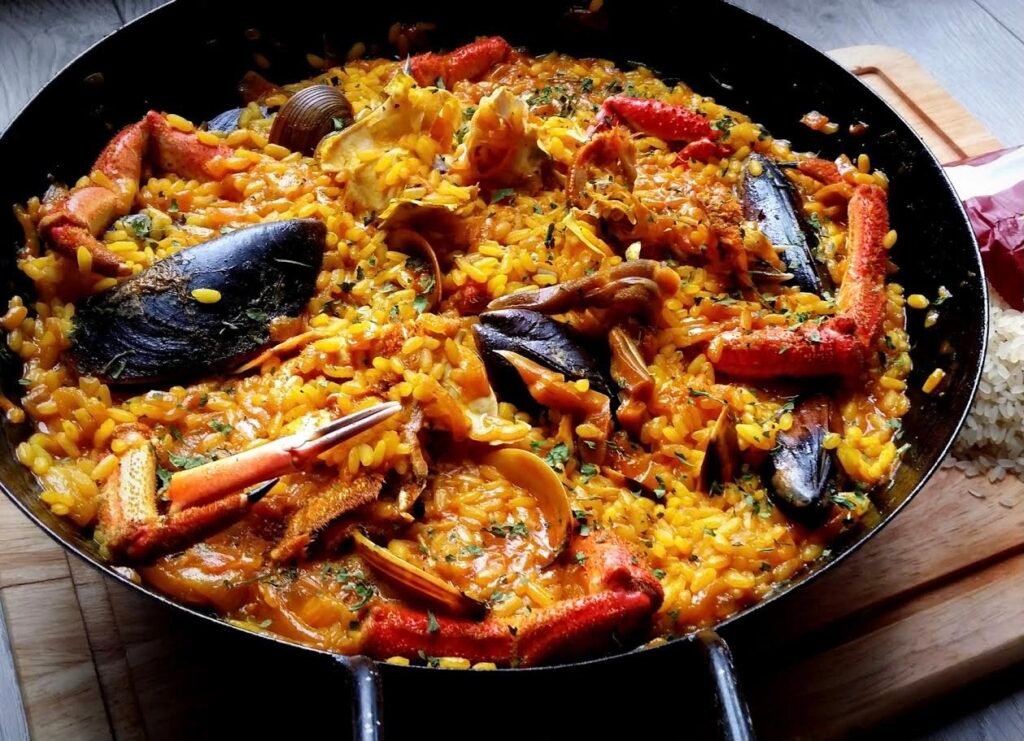
To know the traditional Paella recipes and how to cook them check our Traditional Paella Recipes guide!

To discover the essence and true beauty of Paella check our The Paella Ritual Guide

